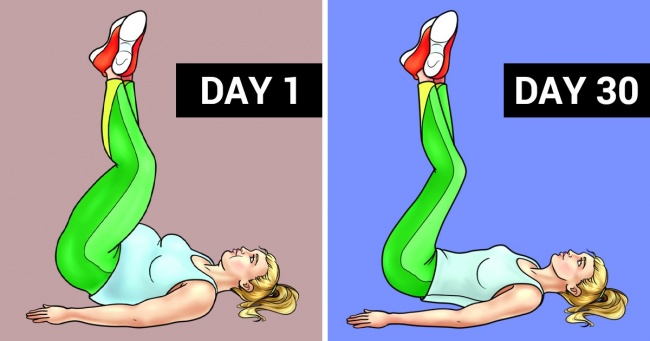When a cold strikes, one of the most uncomfortable symptoms is nasal congestion. A blocked nose not only makes breathing difficult but can also disrupt your sleep, hinder your sense of smell, and dampen your overall well-being. Fortunately, there are several natural remedies that can help clear your nasal passages without resorting to over-the-counter medications. In this guide, we explore 6 natural ways to unblock your nose when suffering from a cold. These remedies, ranging from simple lifestyle adjustments to easy home treatments, are backed by both traditional wisdom and modern science. Whether you’re looking for quick relief or long-term strategies to ease your symptoms, read on for expert insights and practical tips.
For additional information on managing cold symptoms and overall respiratory health, consider resources from Mayo Clinic and Healthline.
How to Clear a Stuffy Nose and Congestion
Sleep On Your Side: Optimize Your Sleep Position for Better Nasal Drainage

Sleeping position can have a significant impact on nasal congestion. Instead of lying on your back, which can cause mucus to pool, try sleeping on your side.
How Side Sleeping Helps
- Promotes Nasal Drainage: Lying on your side can help your nasal passages drain more effectively, reducing congestion and promoting easier breathing.
- Reduces Sinus Pressure: This position minimizes the pressure on your sinuses, which can alleviate discomfort and inflammation.
- Improves Sleep Quality: By reducing nasal blockage, side sleeping can help you achieve a more restful, uninterrupted sleep.
Tips for Better Side Sleeping
- Invest in a Supportive Pillow: A good quality, supportive pillow can help maintain proper alignment of your neck and head, ensuring that your nasal passages remain open.
- Maintain a Consistent Sleep Routine: Establishing a regular sleep schedule can improve overall sleep quality, which is essential for recovery when you’re battling a cold.
For more sleep optimization techniques, check out Sleep Foundation.
Hydrate With Hot Soups And Teas: Boost Your Body’s Natural Decongestant

Staying hydrated is crucial when you’re sick, and warm liquids like soups and herbal teas offer additional benefits for easing nasal congestion.
Benefits of Warm Hydration
- Soothes Throat and Nasal Passages: The warmth from hot liquids can help soothe inflamed tissues in your throat and nasal passages, reducing irritation.
- Improves Mucus Flow: Hot soups and teas can thin mucus, making it easier for your body to expel it, which in turn clears your nasal passages.
- Provides Nutrients: Many soups, especially chicken broth, are rich in vitamins and minerals that support immune function and overall recovery.
What to Drink and Eat
- Herbal Teas: Teas with ingredients like ginger, peppermint, or chamomile not only hydrate but also have natural anti-inflammatory properties.
- Bone Broth or Chicken Soup: These comfort foods are known for their healing properties and can be especially effective in relieving cold symptoms.
For nutritional advice and more cold remedy ideas, visit Healthline’s nutrition section.
Use A Warm Compress On Your Sinus: Relieve Pressure and Promote Drainage

A warm compress can work wonders for sinus pain and congestion by improving circulation and reducing inflammation in the nasal area.
How a Warm Compress Works
- Increases Blood Flow: The heat from the compress dilates blood vessels, which can help reduce sinus pressure and promote drainage.
- Relaxes Muscles: Applying warmth to your face helps relax the muscles around your sinuses, easing the tension that often accompanies congestion.
- Reduces Inflammation: Consistent warmth can reduce inflammation in the sinus passages, making it easier to breathe.
How to Apply a Warm Compress
- Choose the Right Materials: Use a clean washcloth soaked in warm (not scalding) water, then wring it out before placing it over your nose and forehead.
- Apply for 10-15 Minutes: For optimal results, use the compress for about 10-15 minutes, repeating as necessary throughout the day.
- Enhance with Essential Oils: Adding a drop of eucalyptus or peppermint oil to the washcloth may boost the decongestant effect.
For more tips on using warm compresses for sinus relief, refer to WebMD’s sinus infection guide.
Rinse Your Nose Out With A Neti Pot: Natural Nasal Irrigation for Clearer Breathing

A neti pot is a simple, effective tool for nasal irrigation, helping to flush out mucus, allergens, and irritants from your nasal passages.
Benefits of Nasal Irrigation
- Clears Mucus: Regular use of a neti pot helps remove excess mucus that can block your nasal passages.
- Reduces Inflammation: The saline solution used in a neti pot can soothe irritated tissues and reduce inflammation, leading to easier breathing.
- Enhances Respiratory Health: Nasal irrigation can also help prevent infections by keeping your nasal passages clean and free of allergens.
How to Use a Neti Pot Safely
- Prepare a Saline Solution: Use distilled or sterilized water mixed with a saline packet to create a balanced solution.
- Follow Proper Technique: Lean over a sink, tilt your head to one side, and gently pour the saline solution into the upper nostril, allowing it to drain out the other side.
- Clean Your Equipment: Thoroughly clean your neti pot after each use to prevent the buildup of bacteria.
For detailed instructions on nasal irrigation, visit Mayo Clinic’s guide on neti pots.
Buy A Humidifier: Boost Indoor Humidity for Better Nasal Relief

Dry air can exacerbate nasal congestion, especially during winter months when heating systems are in use. A humidifier can add moisture to the air, relieving dryness and easing breathing.
Benefits of Using a Humidifier
- Moisturizes Nasal Passages: Increased humidity helps maintain the moisture in your nasal passages, reducing irritation and congestion.
- Improves Sleep Quality: By preventing dry air from irritating your respiratory system, a humidifier can promote better sleep.
- Enhances Skin Health: In addition to nasal relief, proper humidity levels can also prevent dry skin and other respiratory issues.
Choosing the Right Humidifier
- Types of Humidifiers: Consider ultrasonic or evaporative models that suit your room size and personal preferences.
- Maintenance and Cleaning: Regularly clean your humidifier to prevent mold and bacteria buildup, ensuring the air you breathe is clean and safe.
For more on selecting and maintaining a humidifier, refer to Consumer Reports’ home appliance reviews.
Inhale The Steam From Boiling Garlic: An Unconventional but Potent Remedy

Garlic is renowned for its antimicrobial and anti-inflammatory properties, and inhaling steam infused with garlic can offer unexpected relief for nasal congestion.
The Science Behind Garlic Steam Inhalation
- Antimicrobial Effects: Garlic contains allicin, a compound known for its ability to fight bacteria and viruses. Inhaling steam infused with garlic may help reduce the presence of pathogens in your nasal passages.
- Decongestant Properties: The warmth of the steam helps to loosen mucus, while the potent aroma of garlic can stimulate your sinuses, promoting drainage and clearer breathing.
- Natural Remedy: This age-old remedy combines the benefits of steam inhalation with the natural healing properties of garlic, offering a holistic approach to relief.
How to Prepare Garlic Steam
- Boil Water with Garlic: Add a few cloves of crushed garlic to a pot of boiling water and let it simmer for a few minutes.
- Inhale Safely: Carefully transfer the hot water to a heatproof bowl, drape a towel over your head, and lean over the bowl to inhale the steam. Keep your eyes closed and take slow, deep breaths.
- Frequency: Use this remedy cautiously—no more than once a day—to avoid irritation from prolonged exposure.
For further information on natural remedies for congestion, explore Healthline’s herbal remedy section.
Conclusion: Empower Yourself with Natural Remedies for Nasal Relief
A blocked nose can make even the simplest tasks seem challenging, but these natural remedies offer effective ways to relieve congestion and restore comfortable breathing. By understanding the benefits of side sleeping, hydrating with warm liquids, applying warm compresses, using a neti pot for nasal irrigation, maintaining indoor humidity with a humidifier, and even harnessing the power of garlic steam, you can take proactive steps toward better respiratory health and overall wellness.
These methods not only provide temporary relief but can also be integrated into a long-term strategy to manage cold symptoms naturally. Remember that while these remedies can be highly effective, it’s important to consult with a healthcare professional if your symptoms persist or worsen.
For more expert advice on cold relief and overall health, stay connected with trusted resources like Mayo Clinic, Healthline, and WebMD. Embrace these natural strategies, and enjoy the benefits of clear, comfortable breathing as you recover from a cold.
This article is for informational purposes only and should not replace professional medical advice. Always consult with a healthcare provider for personalized recommendations regarding cold and congestion treatments.









Leave a Reply